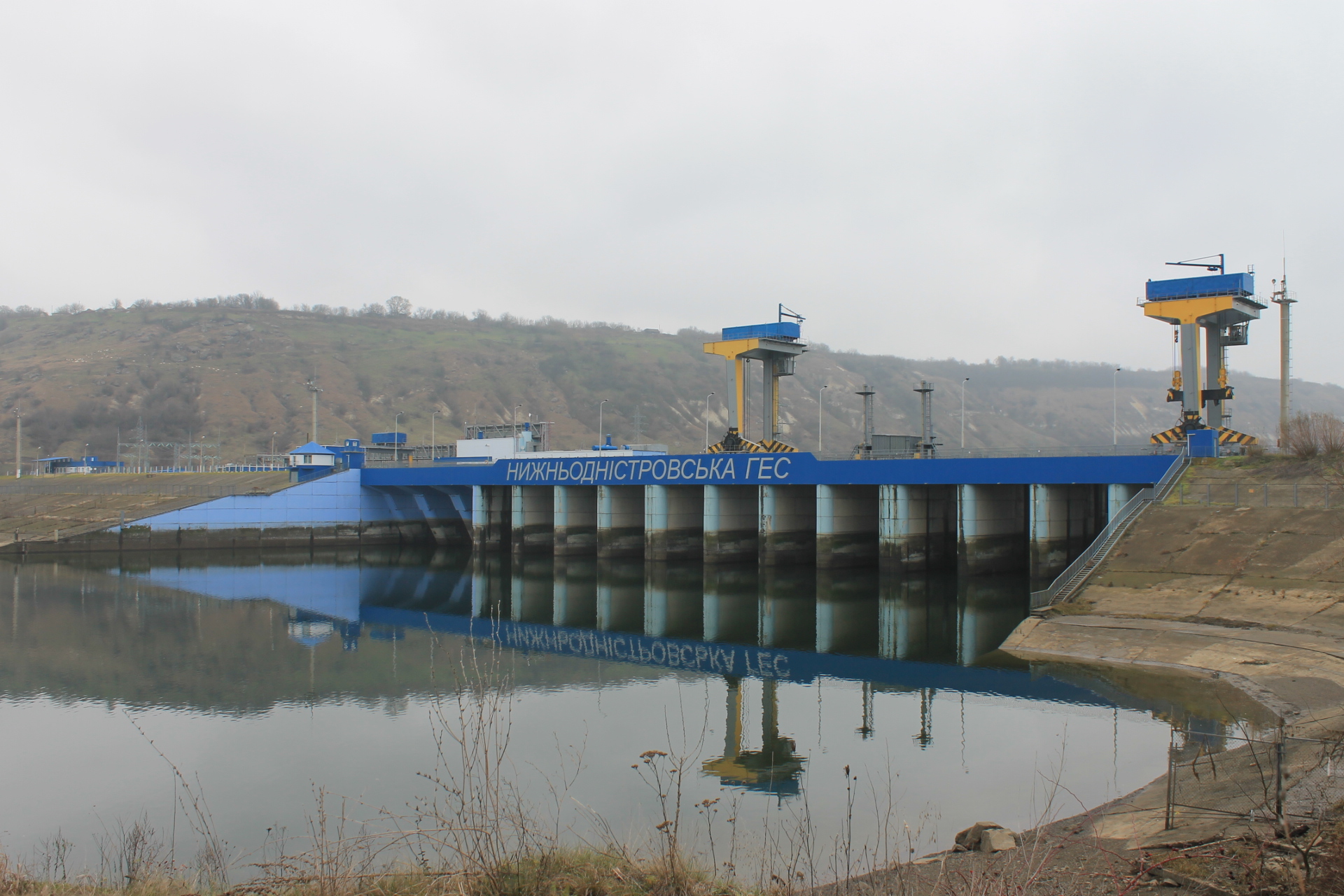War in Ukraine - an environmental time bomb
- Тарас Зозулінський
Investigations awarded by the Association of Environmental Journalists and Ecological Tourism from Moldova.
Investigations awarded by SEEMO 2024.
Putin is waging a double war in Ukraine. One is directed against the Ukrainian people, and the other, no less cruel and insidious, is against nature. Every day there are new sad reports about how the Russian military is destroying the Ukrainian environment with highly toxic weapons. In some cities that were bombed more intensely, air and soil toxicity reached critical levels.
The deep and long-term consequences of the war on the quality of air, soil and water in Ukraine are no longer questioned. Since the beginning of Russian aggression in Ukraine, environmentalists and activists tracking the impact of military action on nature have reported more than 900 cases of ecocide.
Crimes against nature have been documented and cases will be taken to international tribunals for compensation. However, environmentalists from all over the world warn - the “wounds” inflicted on nature are practically incurable. In Bulgaria and Romania, the waves of the Black Sea washed ashore the clear evidence of imminent environmental disaster, and in the Republic of Moldova, just a few tens of kilometers from areas where fighting continues, there are clear signs of environmental deterioration.
Air
Polluted air has no boundaries. Emissions into the atmospheric air caused by the military aggression of the Russian Federation on the territory of Ukraine are transferred, deposited and have an impact on the territories of other states, sometimes at a distance of thousands of kilometers. The soil in European countries is contaminated with heavy metals. Only in Ukraine 2 million m² of fields were destroyed in the first 12 months of a full-scale war.
In Ukraine, there are more than 20 thousand industrial facilities and three thousand warehouses where highly toxic waste is stored. And these objects become targets for the aggressor. Hundreds of tons of combustion products entered the environment after the devastating shelling of the Kremenchug oil refinery and fuel and lubricant warehouses.
The capacities of the Odessa and Lisichansk oil refineries were damaged. According to the State Environmental Inspectorate of Ukraine as of the summer of 2023, the aggression caused more than $52 billion in damage to land, water resources, and atmospheric air. Environmentalists state that damage to ecosystems will be felt for a long time and exceeds the damage caused to infrastructure. The environmental consequences of the crimes of the Russian aggressor will have a long-term impact on the entire European ecosystem.
This includes land contamination, air pollution, and burned forests. Russian ecocide has led to the fact that birds and animals from the Red Book are under threat.
The food is also contaminated. The world's food supply is at risk.
Military actions are destroying the forests of Ukraine, which has also affected the food security of the world. A separate topic is mined areas. Mine explosions lead to soil contamination with heavy metals - lead, strontium, titanium, cadmium, nickel. This makes the soil dangerous.

In the East and South of Ukraine there is low forest cover. But these forests perform protective functions. Destruction and damage led to significant erosion processes. In particular, in the south of Ukraine the consequences are wind erosion and desertification. This, of course, affected agriculture. Hazardous substances tend to penetrate through the soil into water or plants that are grown on it, and from there into the body of people who will consume the finished products. This was confirmed by a study by the Institute of Microbiology and Virology.
Expert Lyudmila Belyavskaya notes that “flying a rocket over a field affects fertility because toxic rocket fuel is released. Fuel residues can be deposited, for example, on wheat. As a result, manufactured products already contain toxic substances. Then the wheat grain can no longer be used for food,” explains the scientist.
Ekaterina Polyanskaya, ecologist from the organization “Ecology. Law. Man,” collected more than a hundred soil samples from different regions of Ukraine where fighting took place in order to determine the chemical changes that occurred in the soil. It turned out that the soil from a shell crater in a schoolyard in the Nikolaev region contains more than 600 milligrams of lead per kilogram. This is approximately 20 times the maximum permissible concentration.
The constant movement of military equipment, which uses many times more fuel than conventional cars, affects the pollution of the atmosphere with greenhouse gas emissions. Researchers led by Dutch expert Lennard de Klerk published data at the climate summit in Bonn suggesting the total figure could be more than three times higher.
Greenhouse gas emissions associated with military operations. Only for the first twelve months of the war, according to the updated assessment of the Initiative for accounting for greenhouse gas emissions from the war, they amounted to 120 million tons of CO2. This is equivalent to the total annual greenhouse gas emissions of Belgium.
This is one of the effects of the war, which will be felt not only in Ukraine, but also far beyond its borders, including in the countries of the global south and, in particular, in the least developed countries, which are often the most vulnerable to the consequences of climate change.
Such an influence will consist both in a direct increase in the risks of the manifestation of catastrophic consequences of climate change (increased temperatures and extreme heat, droughts, heavy rains and other natural disasters, loss of biodiversity, etc.), and in a possible risk of redirecting financial resources from with the help of reduction of emissions and reduction of vulnerability to climate change to increase security and militarization.
While countries and companies around the world are looking for a solution to reduce greenhouse gas emissions, Russia's aggression continues to generate millions of tons of CO2 emissions every month.
Condemnation by ecologists of the aggressive war of the Russian Federation.
Damage to gas facilities resulted in the release of gas under high pressure into the environment, which leded to a significant number of fires in the Odessa region. Kyiv region also suffered from fires, and the capital itself was recognized as the most polluted city in the world in 2022.

July 2023, a conference on environment and health care was held in Budapest. Representatives of 28 countries signed a statement condemning ecocide - environmental war crimes committed by the Russian aggressor. The signatories, in particular, emphasized the explosion of the Kakhovskaya HPP and the irreparable destructive consequences it caused to the environment.
"We condemn Russia's aggressive war against Ukraine, which directly contradicts the goals of our conference, namely: it threatens climate stability, biodiversity, ecological cleanliness and creates direct cross-border dangers and risks that we deal today," says the the statement. The press service of the Ministry of Health of Ukraine informs.
Terrorist attack on the Kakhovskaya HPP
The National Public Health Agency of Moldova is confident that many dangerous substances got into the water after the Kakhovskaya HPP dam broke and flooded a large area. All this increased the risk of an outbreak of diseases that can be transmitted by water - intestinal infections, hepatitis, botulism, cholera and even anthrax, as well as those that can be transmitted by rodents - leptospirosis and tularemia. Due to Russia's destruction of the Kakhovskaya HPP, at least 32 gas stations, warehouses, and oil refineries were flooded. As a result - leakage of chemicals, oil gasoline.
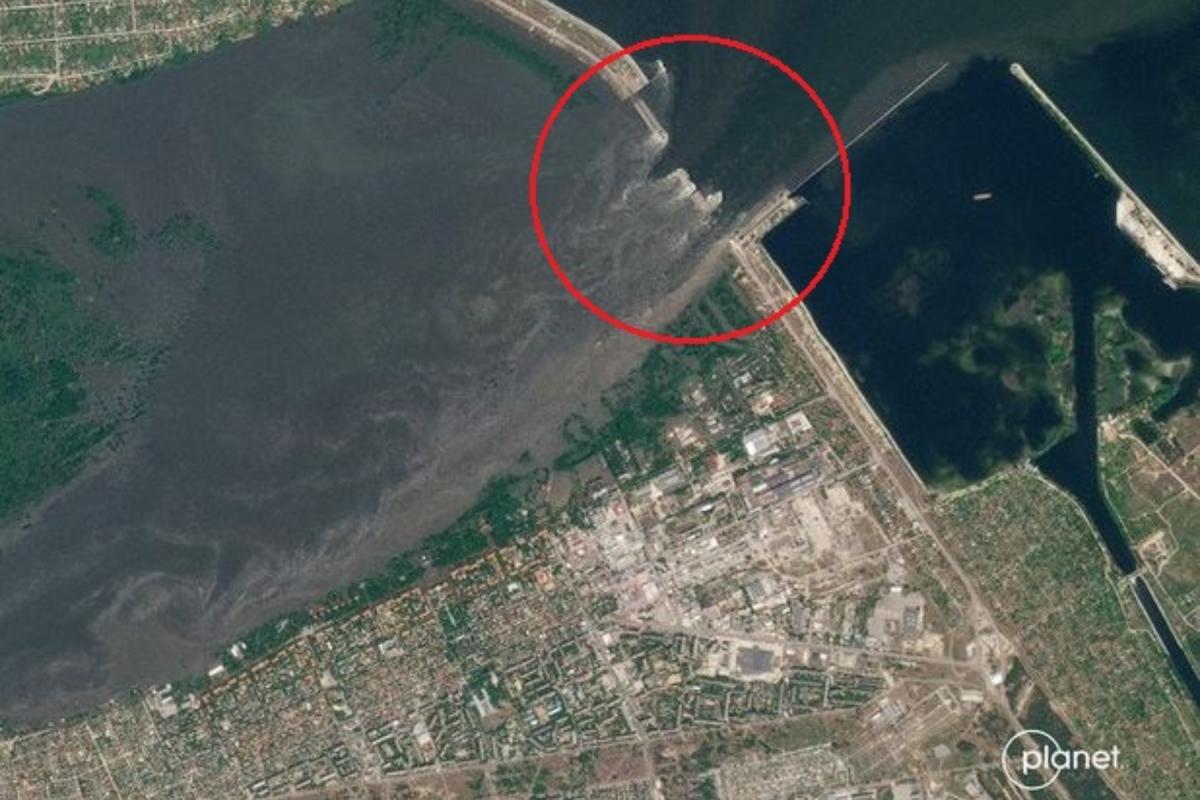
In the first days, at least 150 tons of engine oil leaked into the water. Particularly severe pollution caused the flooding of industrial areas, from where chemicals were washed downstream and polluted the Black Sea. Where the water is receding now, large-scale pollution by products of the oil refining industry and industrial and household chemicals should be expected. Heavy metal pollution should also be investigated," comments chemist Manfred Santen, Greenpeace Germany.
According to the Minister of Health Viktor Lyashko, in the summer the pollution level of the Dnieper River reached more than 28 thousand times higher than normal.
Viktor Lyashko, commenting on the explosion of the Kakhovskaya HPP, said that a large number of sewage structures, cattle burial grounds, and cesspools were flooded. Contaminated water entered the water supply networks. All this led to outbreaks of acute intestinal infectious diseases. These are acute intestinal infections and viral infections - hepatitis and parasitosis.
According to the "Ukrainian Environmental Protection Group", due to the destruction of the dam, a lot of combustible and lubricating materials got into the water, which are toxic to aquatic life and can form a film on the surface of the water. In addition, the flooding of settlements, including cesspools, agricultural land, gas stations means that an unusually large amount of pollutants fell into the sea. This can affect different groups of living organisms – from plankton to cetaceans in the Black Sea, - the Group writes.

The President of Ukraine, Volodymyr Zelenskyi, stated that as a result of the destruction of the Kakhovskaya HPP dam, warehouses with substances dangerous to nature and people and burial grounds for cattle, in particular, infected with anthrax, were underwater.
From the south of Ukraine to Europe
Polluted water from the channel of the Dnieper flowed into the Black Sea. A plume of dirty water, including silt, a fertile layer of the soil of flooded territories and the remains of washed away settlements, combined with the sea currents of the northwestern part of the Black Sea and headed south to the coast of Romania and Bulgaria. The south of the Kherson region is the place of the largest concentration of nature-protected territories in Ukraine. It is here that the most important territory for wetland birds in the entire northern Black Sea region is located. They are protected at the international level by the Ramsar Convention and are part of the Emerald Network of Europe.
According to the "Ukrainian Nature Conservation Group", due to the explosion of the Kakhovskaya HPP, negative consequences for wildlife will manifest on an area of at least 5,000 km². 1). Impact on nesting colonies of birds. Important nesting sites of wetland and coastal waterfowl were destroyed in the flood zone. These are tens of thousands of individuals. It is in the floodplains of the lower Dnieper that the largest colonies of herons and other colonial birds in the region are concentrated. The catastrophic impact of bird traps during the nesting period, in particular the presence of chicks. There is no time for the creation of new colonies and repeated breeding. Herons and grebes, terns, terns, ducks, herons, shepherds, coots and moorhens, whooper swans lost their nesting colonies.
There are nature protection areas of international importance in this area. The consequences of the terrorist attack negatively affected the territory of the Emerald Set, Kakhovske Reservoir, Velykyi Luh National Nature Park, and Bazavluk, wetlands of international importance in the Bolshie and Malye Kuchugury Archipelago. These places were the largest places in the region for nesting colonies of martins, terns, herons, as well as waders and other birds in the summer. These colonies numbered thousands of birds, among which were rare. They played an important role in maintaining the number of populations of rare species throughout Europe. During migration, these birds stopped to rest and feed precisely on the coasts of the Black Sea and Sivash. Many populations of wetland birds, which flew here from Northern Europe, wintered in the south of the region in winter.
The change in the conditions of existence became disastrous for wetlands and led to their rapid degradation. How many of them will survive the winter and return to Northern Europe?
Impact on the territory of the Emerald Network
The flooded territory fully or partially includes 9 objects of the Emerald Network of Europe, created by the decisions of the Council of Europe from 2009 to 2020. The loss of natural features of these territories has led to the threat of Ukraine fulfilling its obligations to preserve these territories for the whole of Europe.
How to gather evidence to recover environmental damage from Russia through international courts
One of the methods of calculating environmental damage is counting how much land can no longer be used for its intended purpose. When building materials burn out, toxic substances enter the air, depending on whether it is linoleum or DPS or paint. Lacquers can form various toxic formaldehydes, nitrogen oxides, which are dangerous to life. And cause cancer. International experts - ecologists consider the fixation of war criminals to be the first priority measure.
The reasons for the need to investigate criminals against the environment are, first of all, necessary for the protection of Ukrainians, the prevention of new such crimes, the possibility of liability for the guilty. The first step to obtaining compensation is a clear establishment of the fact of damage. The investigation of war crimes against the environment in Ukraine may prevent the commission of ecocide in the course of armed conflicts or wars in the future.
According to the calculations of the State Environmental Inspectorate, a day of Russian aggression costs Ukrainian ecology 4 billion UAH.
ECOCIDE: Animals and birds of Europe - targeted by Russian war criminals
In 2022, according to experts, at least 50,000 Black Sea cetaceans died in Ukraine, Romania and Bulgaria as a result of war crimes committed by the Russian aggressor.
The first months of a full-scale war.
The first dead animals began to be found on the Turkish shore of the Black Sea, near the Bosphorus, in March, almost immediately after the start of the full-scale Russian invasion of Ukraine. Fuel and oil spills began to poison the water, which is home to many organisms important to the ecosystem. A mass death of cetaceans was observed in Bulgaria in April. Dolphins also died here at this time of the year in previous years, but now it is many times more than usual.
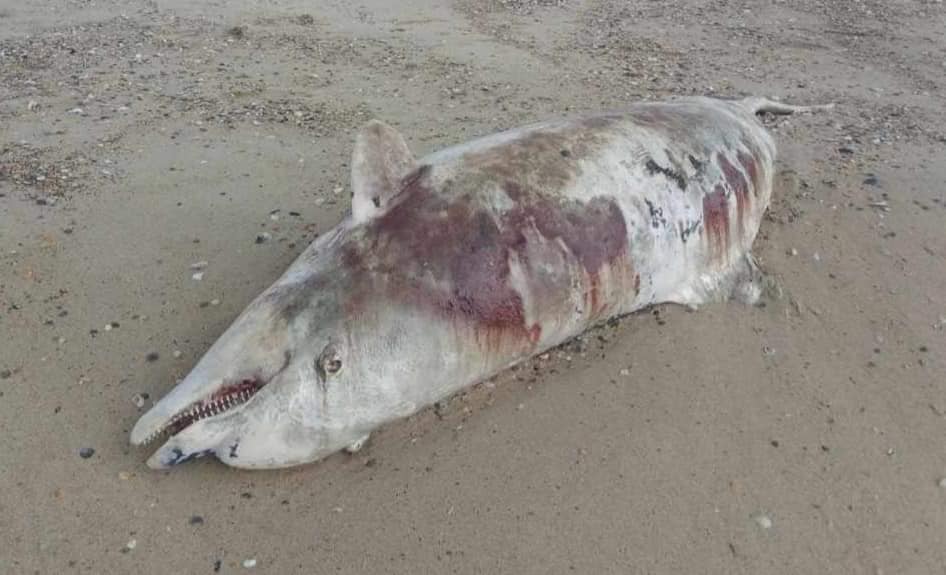
In May, just a few months after the sea bombardment began, dead dolphins were found in Romania. Romanian marine biologist from Constanta Rezvan Popescu-Mirceni published the horrifying pictures: "Imagine that the dolphin in the picture, which had an extensive burn wound, was still alive at the time of photography. According to our estimates, they did not eat for at least the last 10 days, judging by the thickness of the adipose tissue. Those who were not burned suffered internal injuries that seriously affected their ability to orient themselves. I can't even imagine what pain this poor animal is experiencing." The incident was recorded just a few days after more than 60 dolphins were found on the shore of the Romanian coast near Sulina, which is an unprecedented phenomenon in the last 20 years. Environmentalists explained that noise pollution from warships could be the cause of mass beaching.
The biologist noted that it is still difficult to assess the scale of the disaster: "They have burn wounds. Most likely, but it is not certain, it is phosphorus. Why phosphorus? Because this substance burns under water, and not only on its surface. And in addition, "We are talking about cetaceans, which are usually found near the shores or even in ports. So it is quite possible that they are near or even in some active theaters of war."
A monitoring mission is currently being conducted in the Black Sea. "Samples will be taken, and in mid-June we will return with information. Monitoring includes several segments in the field of biodiversity and the presence of pollutants in surface sea waters," Popescu-Mirchen added.
Marian Payu, executive director of the non-governmental organization Mare Nostrum from the city of Constanța, Romania, told us that in 2022 the number of dolphins washed ashore increased compared to previous years, but so far it has not been possible to prove a direct connection with the war in Ukraine. "At the level of Romania, no scientific evidence of the impact of the war on cetaceans has been revealed. In fact, 2022 was the year when the largest number of shipwrecks was recorded on the Romanian coast, but the "war-mammals" relationship was not proven, or rather, it was impossible to do so," said Marian Paiu.
Contusion of dolphins.
In the summer of 2023, the specialists of the "Tuzlovsky Lymany" NPP again began to register the death of dolphins.
Doctor of Biological Sciences, Professor Ivan Rusev reported that dolphins are dying both in the Sea of Azov and on the shores of the North-Western part of the Black Sea. In particular, in Bulgaria.
Animals die from the influence of military sonar from underwater and surface boats.
This is the so-called acoustic trauma - something like a contusion. Such injuries occur due to the operation of radars, explosions in the sea, rocket launches.
According to the doctor of biological sciences Pavel Goldyn, the most dolphins - porpoises - are in the Dzharylgat Bay (Ukraine). There they are as numerous as on the shores of Bulgaria and Georgia.
According to the latest scientists' estimates, there are about 250,000 dolphins in the Black Sea, which are listed in the Red Book of Ukraine. These are porpoises, common dolphinand bottlenose dolphins.
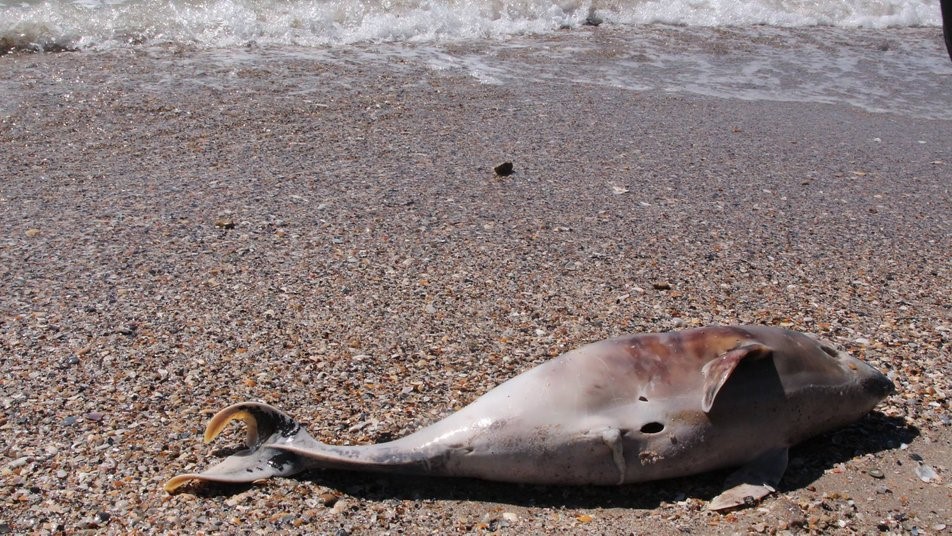
Criminal case.
The police of the Odesa region are investigating a criminal case on the fact of ecocide (Article 441 of the Criminal Code of Ukraine). Law enforcement officials established the mass destruction of dolphins as a result of Russia's armed aggression against Ukraine.
Since the beginning of the full-scale invasion, law enforcement officers and environmentalists have identified a large number of dead marine mammals. The probable cause of their mass death is the use by the aggressor vessels of sonar devices (sonars) on underwater and surface boats, which create powerful sounds that negatively affect the health of animals.
Procedural production is carried out by the Specialized Ecological Prosecutor's Office of the Odesa Region.
It sent requests for international legal assistance to Bulgaria and Romania - to confirm similar cases of dolphin deaths.
Representatives of the Institute of Zoology named after I.I. Schmalhausen, Scientific Research Institution "Ukrainian Scientific Center of Marine Ecology", NPP "Tuzlov Estuary" and veterinary doctors are involved in the investigation.
Contamination of the coast of Bulgaria and Romania with mines, missiles and aircraft.
Dolphins also die due to sea mines breaking off from their anchors and arriving at the shore, as well as due to the drifting of mines along the coast, - explained the Odesa Regional Military Administration.
Pollution of the Black Sea water area does not only occur in Ukraine, because mines also drift along the coast of Bulgaria.
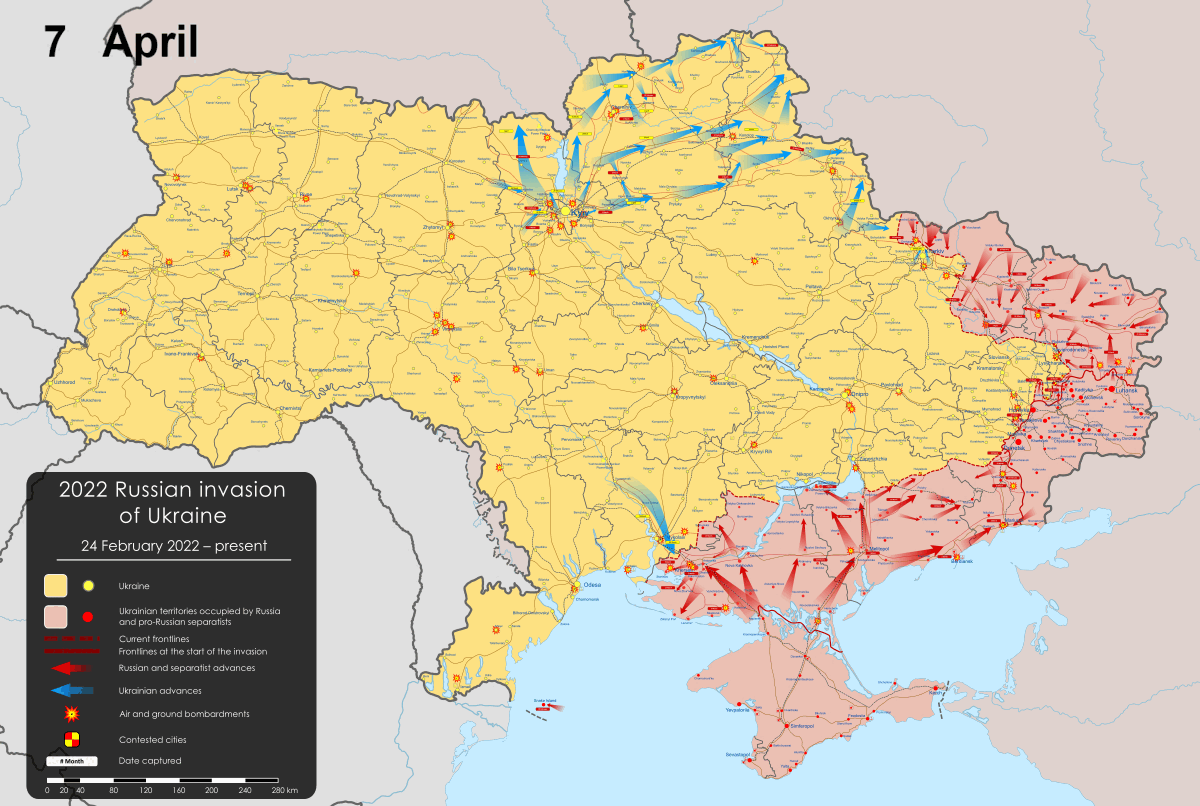
All because back in March 2022, after the start of a full-scale invasion of Ukraine, the Russian army mined the sea lanes from the Bosphorus to Odessa.
The Russian aggressor is shelling the territory of Ukraine with missiles from its ships illegally located on the coastal territory of Ukraine. Some of the launched missiles do not reach their targets and fall directly into the sea. These missiles cause significant damage to living resources and life in the sea in general when they fall and break up.
Because of Russia's armed aggression, destroyed ships and aircraft are systematically sunk in the territorial waters of Ukraine, and this also damages the Black Sea ecosystem.
Russia is responsible for the actions of its warships. And the above is a direct violation of international maritime law, in particular the UN Convention on the Law of the Sea of 1982 (UNCLOS), which was ratified by the Federal Law of the Russian Federation dated April 26, 1997 No. 30-FZ.
Having signed and ratified the relevant Convention, Russia became a participating state and agreed to observe its provisions, which are defined in Article 1 of the Convention.
Mass ecocide of birds and animals.
In the south of Ukraine, where intense fighting is taking place, there are water objects that serve as a stop for birds of the wetland complex. Seasonal migrations pass through these objects. More than 120 species of birds, which are protected by the agreement on the conservation of African and Eurasian wetland birds, are under threat. Of particular concern is the destruction of the chebotar's colonies. In just one night, its nesting sites within the National Natural Park "Tuzlovsky Limans" were shelled by two-hundred-millimeter shells from Russian ships based in the coastal waters of the Black Sea.
After the full-scale invasion of the Russian Federation into Ukraine, numerous objects of the nature reserve fund, the territory of the Emerald network and wetlands of international importance were under occupation.
So, since the spring of 2022, the Kinburn spit became the site of hostilities and suffered devastating fires. Great parts of forests were destroyed around numerous freshwater lakes and ponds, where unique colonies of wetland birds were formed. Parts of the Black Sea Biosphere Reserve, the Azov-Syvash Reserve, and the Meotida NPP are still occupied.
Internationally recognized Ramsar sites such as Yagorlytsky Bay, Karkynytsky and Dzharylgatsky Bays, and the eastern and central parts of Sivash Bay are also under the control of Russian troops.
There is a causal relationship between burned forests and destroyed swamps - and the death of Red Book animals and birds. Interrupted international seasonal migrations of birds of Africa and Eurasia.
Another aspect of the influence of ammunition explosions is the constant noise from combat operations. This is stress for the birds. As a result, migration paths are changing. This problem is especially relevant for birds that make annual migrations of thousands of kilometers.
Three such major migration routes pass through the territory of Ukraine: the Azov-Black Sea, the Polessky latitudinal corridors and the Dnieper meridian migration route. All of them suffered as a result of hostilities, so the consequences of the war for migratory birds throughout Eastern Europe continue to accumulate.
How the war of the Russian Federation against Ukraine affects the water resources of Europe.
The war crimes of the Russian aggressor have long-term consequences for the environment not only of the Ukrainian territories, but also for the ecological system in general, especially Europe.
Pollution knows no boundaries. And the damage that the ecological environment of Ukraine constantly suffers will also be felt in Europe, and especially in neighboring countries.
For example, during the bombardment of chemical objects, the poison enters the water channels, which run a long way and cross each other. Thus, the poison spreads to the territory of other countries and affects the local environment. Aquatic fauna suffers from this.
River pollution as a result of Russian aggression affected neighboring countries. Ukraine shares large rivers, such as the Danube, the Dniester, the Prut, the Tisza, and the Western Bug, with neighboring countries: Poland, Hungary, Romania, and Moldova.
Due to the destruction of sewage treatment plants, untreated water flows from sewers into rivers. As a result, the maximum allowable concentrations of polluted substances in water are exceeded tens, or even hundreds of times.
Russian aggression led to large-scale pollution of reservoirs not only in the war zone or close to the front line, but also throughout the territory of Ukraine, which was subjected to massive missile strikes. It is necessary to mention such factors as the ingress of harmful substances, formed as a result of man-made accidents, into reservoirs with surface runoff; oil spills from destroyed equipment; direct contamination with ammunition remnants and rocket fuel.
The State Ecoinspection systematically collects samples in rivers and records exceeding standards for ammonium, nitrites, nitrates, and iron.
The most dangerous component is highly toxic rocket fuel, as well as contamination of reservoirs with heavy metals.
In an interview with the mass media, UN Deputy Secretary General Inger Andersen also spoke about the impact of Russian ecocide on neighboring European countries:
"Cross-border influences obviously cause concern in a number of countries directly bordering Ukraine. Forests run across the border. The water flows to the neighboring country. Water-bearing arteries are connected underground. The winds blow as they blow," said Inger Andersen.
In the Republic of Moldova, the air monitoring system is updated daily. Information from 17 monitoring stations based on manual sampling. But not all of the Republic of Moldova is covered, there are gray areas that are not included in the statistics. Only the municipalities of Chisinau, Beltsy, Bendery, Tiraspol and Rybnitsa are covered by the relevant monitoring system. Two more automatic monitoring stations are located in Rezyna and Leova.
Ecologist Aleku Renitse believes that now it is very difficult to express any opinion on the scale of the environmental disaster that Vladimir Putin's army has created and is creating with every shot. The situation in the Republic of Moldova depends on the duration of the war, as well as on the distance at which atrocities are committed. The closer we are to the conflict zone, the farther the hope for a healthy natural environment. At the moment, says the ecologist, there are all signs that the environment suffers and calls for help no less than people. Even after the end of the war, it took years to document the enormous damage caused to the environment.
Researcher Victoria Nystryanu told Anticoruptie.md that the migration of animals from forests destroyed by fires in Ukraine should not affect the Republic of Moldova, at least in the coming years. We are "saved" by the fact that there are few forest areas in the regions bordering Ukraine, therefore, most likely, animals will seek shelter in the forests of the Carpathians.
"In the medium- and long-term perspective, the destruction of the habitat will lead to the redistribution of animals, primarily within Ukraine. The harmful consequences of this cruel intervention will be noticeable years later. It is possible that due to pollution, sick grandkids with abnormalities will be born," the scientist noted.
Ecologists from Moldova note an increase in the number of migratory birds arriving in the Republic of Moldova over the past two years. They associate this growth with the war in Ukraine and the destruction of some ecosystems and habitats.
ECOCIDE in Ukraine: Time bomb for Moldova
Ecocide in Ukraine, provoked by Russian military aggression, which has been going on for almost two years, has consequences for neighboring countries as well, with Moldova and Romania being the first victims.
Putin's plans do not stop at the destruction of infrastructure and strategic industrial facilities of Ukraine, but are purposefully aimed at everything related to the environment: soil, water, ecosystems. Increased concentrations of pollutants were recorded in water, air, and soil during certain periods. Animals and birds migrated from Ukraine to neighboring states, escaping from fires and explosions.
Environmentalists say that the consequences of the war on the environment are comparable to a ticking time bomb: soil contaminated with chemical particles will continue to bleed for many years, which will lead to catastrophic consequences, and hazardous substances will eventually reach far beyond Ukraine. The Moldovan authorities admit that they do not have enough specialized resources for detailed monitoring of environmental changes to determine how big the impact of the war in a neighboring country is on nature, but they realize that the negative consequences will be felt in two to three years.
Explosions on the territory of Moldova
October 31, 2022. Strong explosions scared the inhabitants of the northernmost settlement of Respublika Moldova - Naslavcha of Oknytsia district, on the border with Ukraine. A Russian rocket shot down by Ukrainian defense forces exploded on the territory of the Republic of Moldova. "We were very scared. We lay down on the ground. We didn't know where to hide. We are on the border," a resident of the village tells us in Ukrainian. Her neighbor remembers how she heard a rumble, then an explosion, followed by two more, and black smoke rose, and then flew over the village: "I thought it was a military plane, then I saw a rocket, it almost hit the neighbor's house. I thought that the war had started here. We didn't know what to do. It was terrible," says the woman. The consequences of the explosion were severe: 30 households suffered - windows and roofs were damaged. In some houses, the front door has come off its hinges. The school in this village stopped its activities, and the police surrounded the settlement with security tape and cordoned off the place where the rocket fell.

On that day, October 31, Russia struck with missiles and drones the Novodniestrian hydroelectric junction on the Dniester, on the territory of Ukraine, which is locate 10 km from the Naslavcha dam, in the Republic of Moldova.
The Ministry of Defense of Moldova sent a group of sappers to Naslavch to study the territory after fragments of a Russian rocket fell on the territory of the Republic of Moldova. The department clarified that this time the Russian missile flew not over the airspace of the Republic of Moldova, but near the border of our country. The shrapnel fell after the missile was shot down by the Ukrainian anti-aircraft system. "In the context of the relevant incident, we inform you that the air surveillance systems of the National Army did not detect illegal flights in the airspace of the Republic of Moldova. We also note that the fragments of the downed missile were not detected by radar stations due to their size and small reflection surface", - explained in Chisinau Ministry of Defense.
"This article was developed with the support of Journalismfund Europe".
Taras Zozulinskyy (Bureau of Journalistic Investigations "Detectives", Ukraine),
Cornelia Cozonac (Centrul de investigatii Jurnalistice Moldova)
The investigation used a "YouControl" analytical system
10/01/2024

